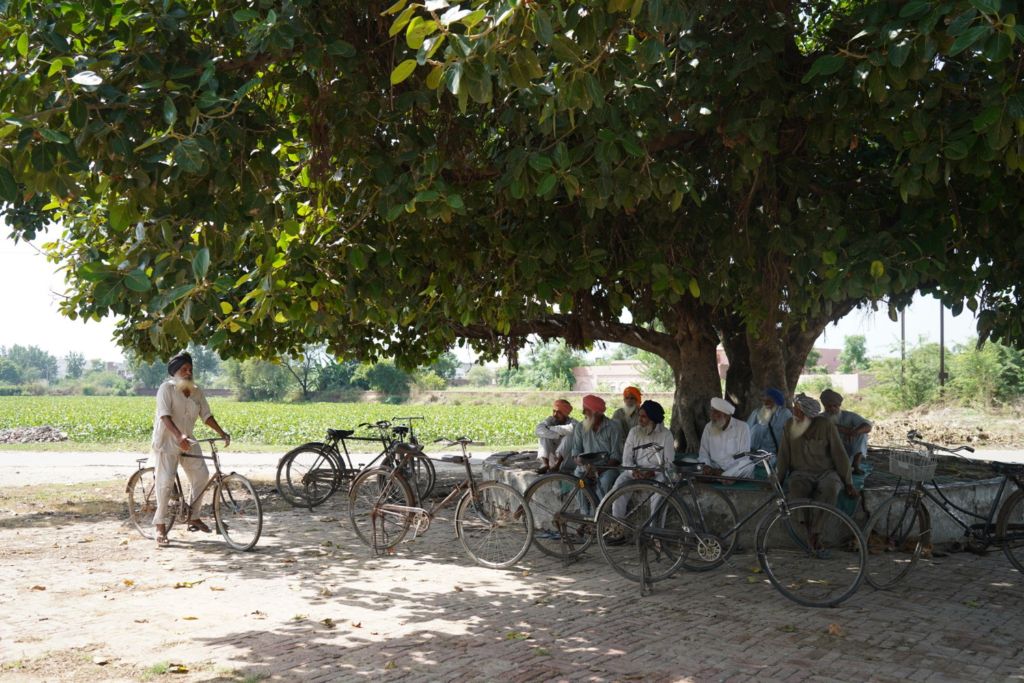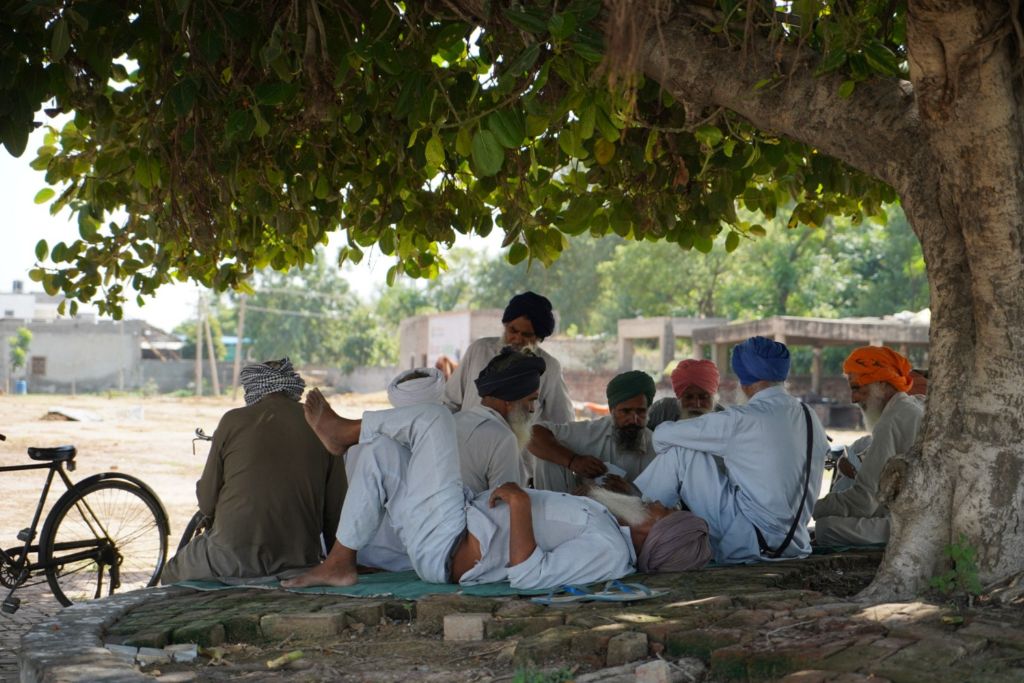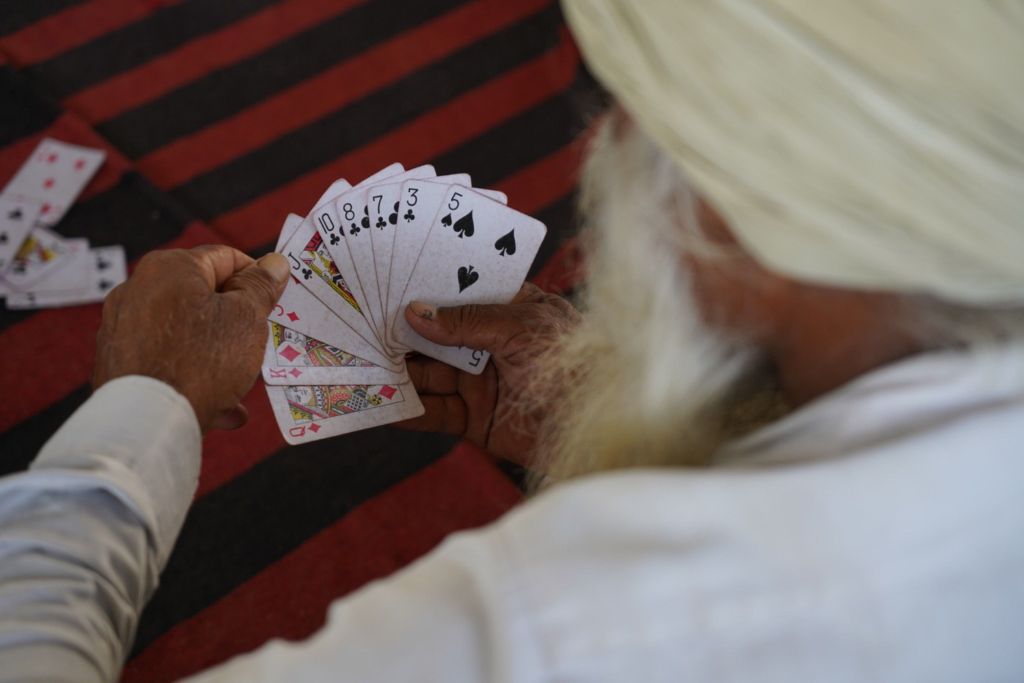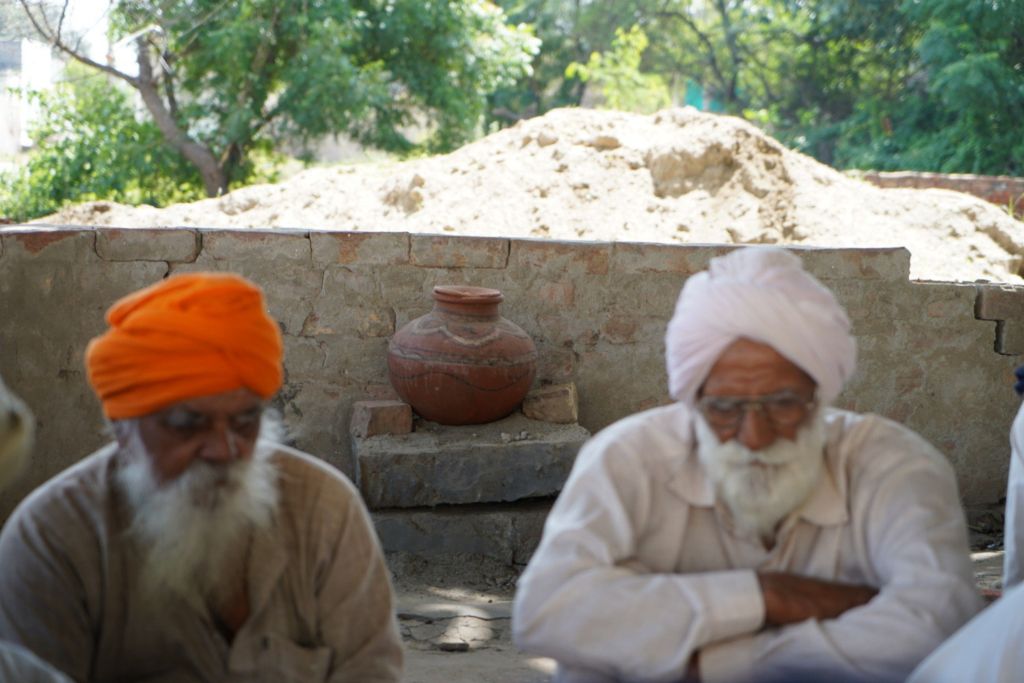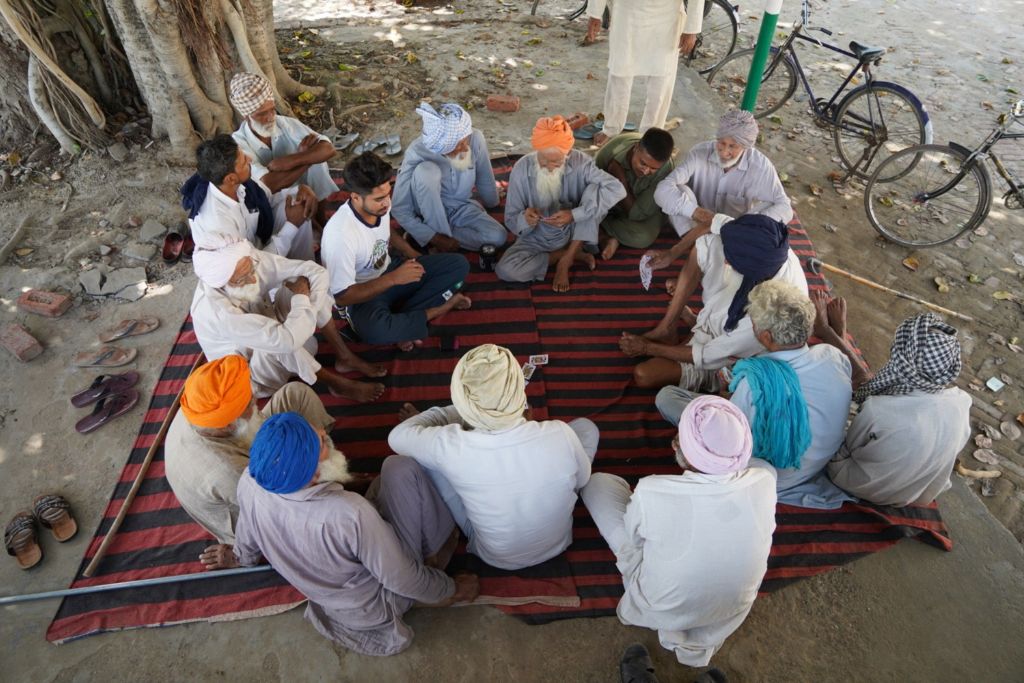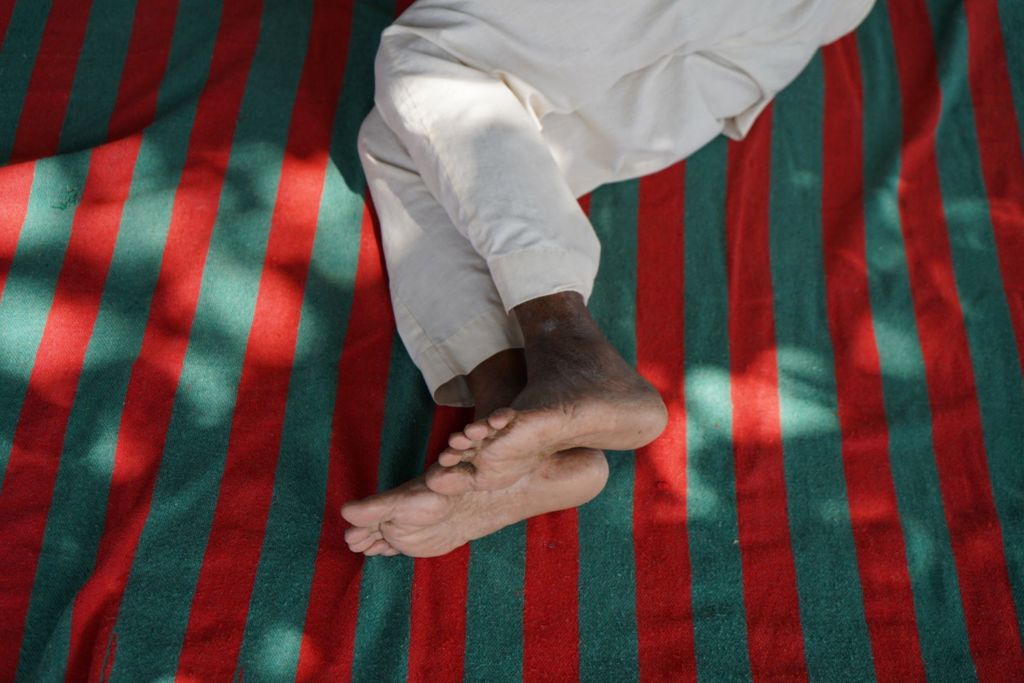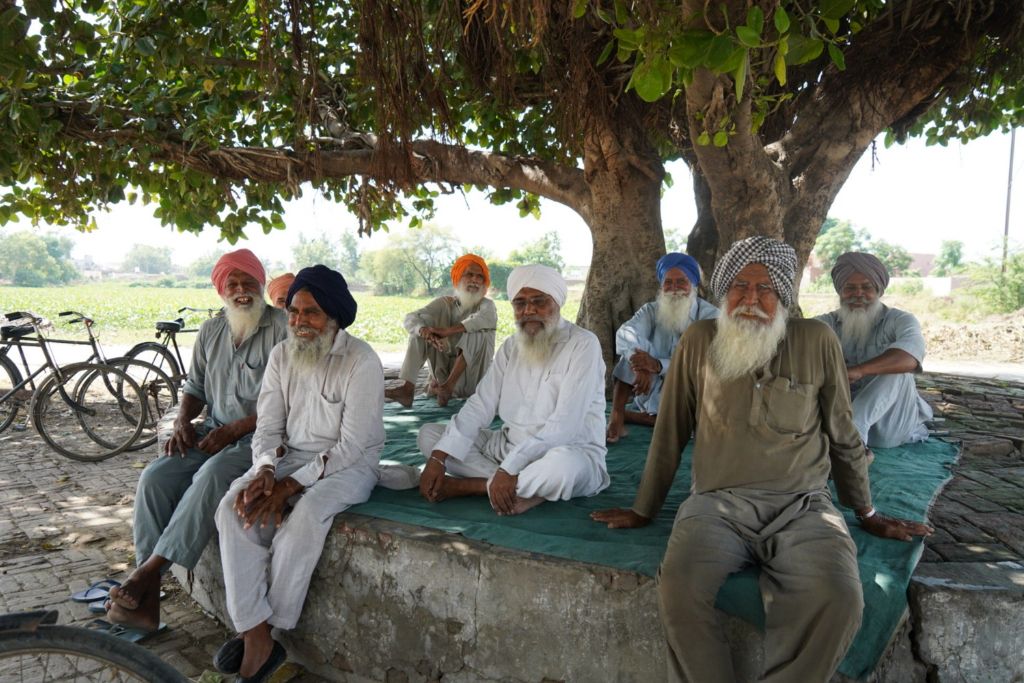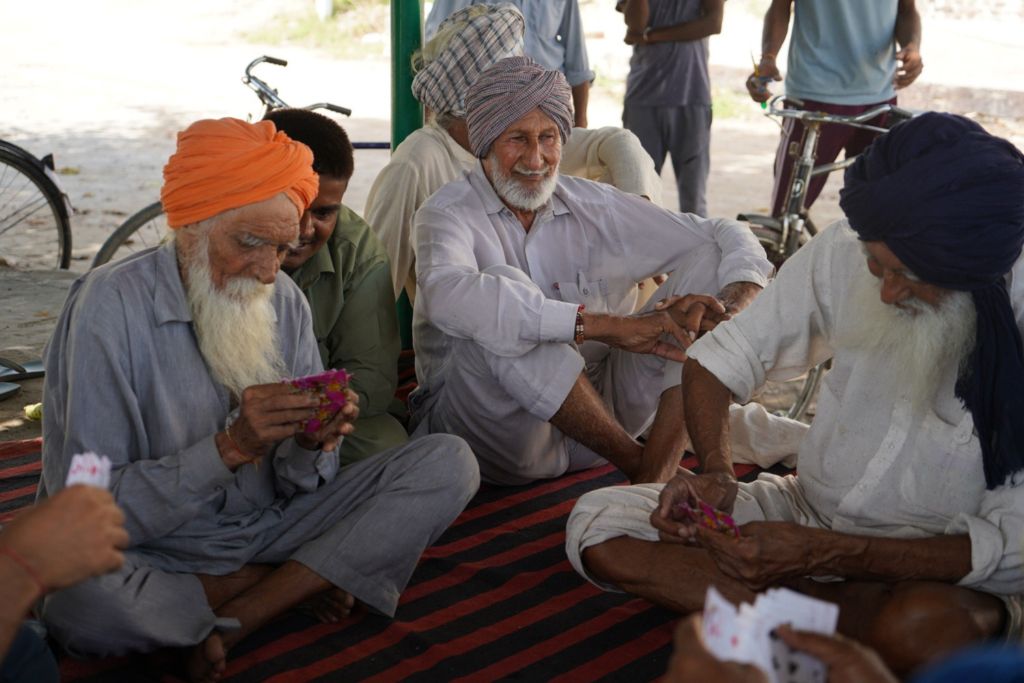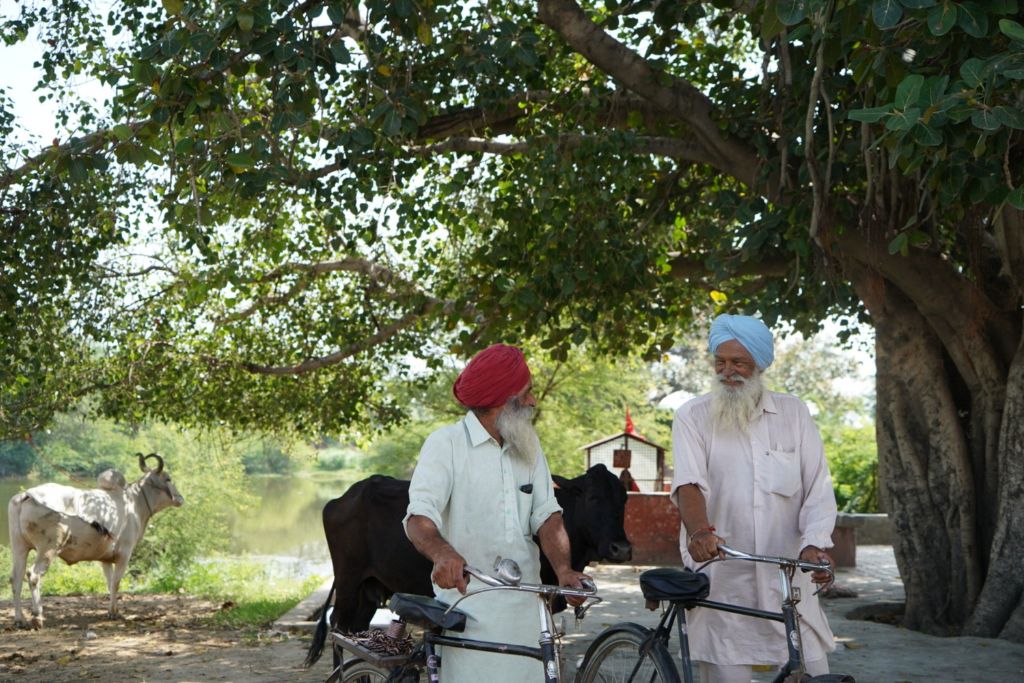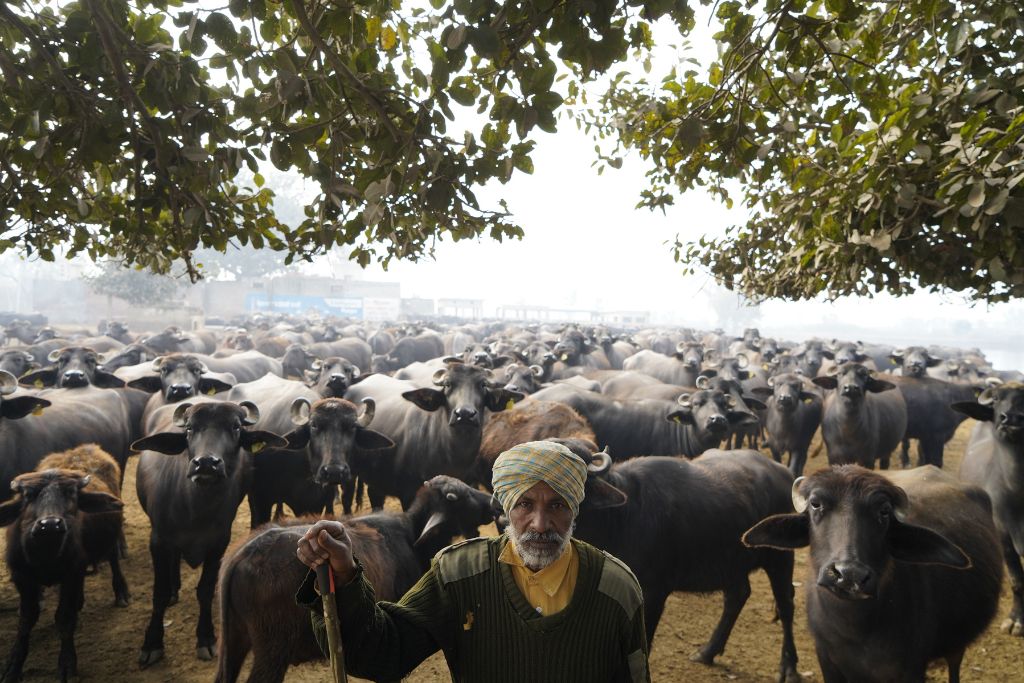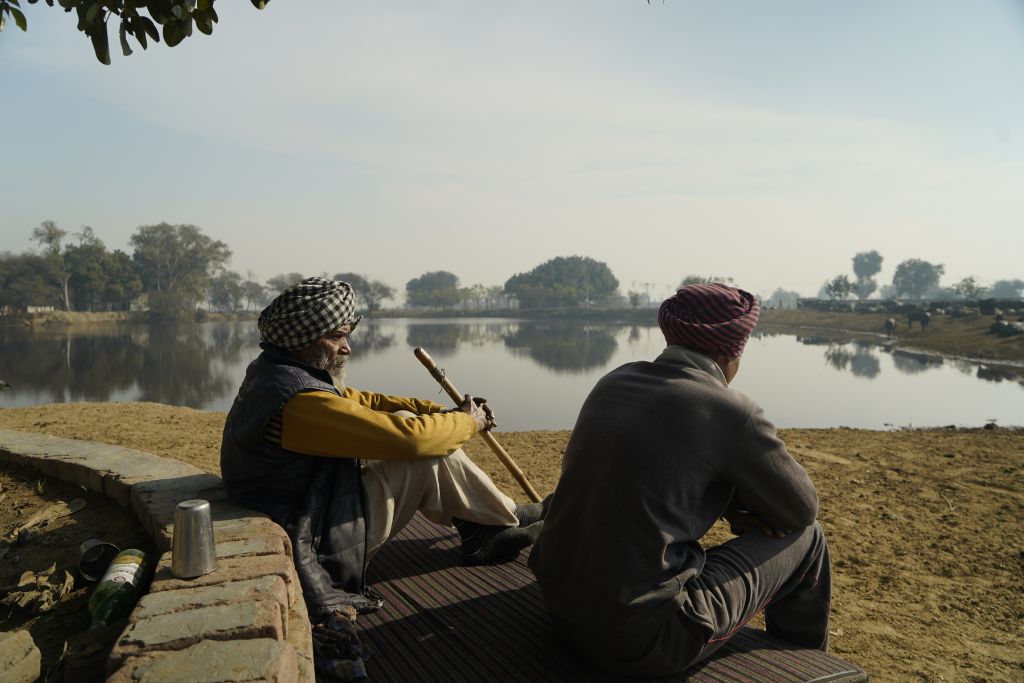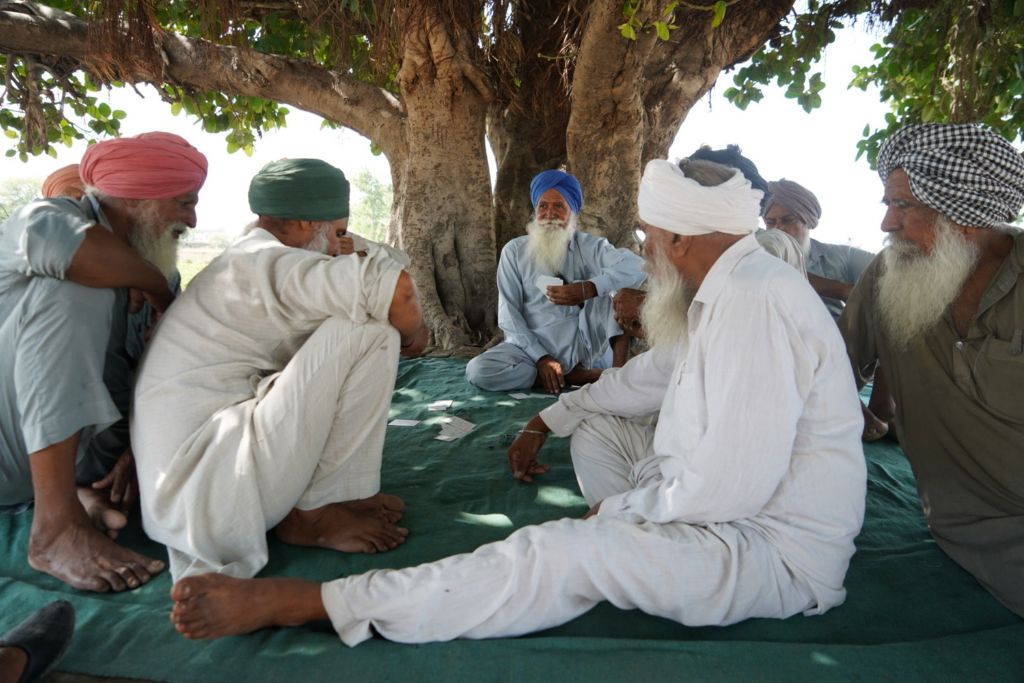
A day at a village square
As Village Square turns 7 today, we feature a village square from Punjab where elders gather during the day as they return from fields – to take a nap, play cards or just catch up on everyday life.
A village square is the heart of every village where residents come together for daily chit-chats or relaxing evenings. In this picture we see a group of elderly men gathered at a local satth (village square) to enjoy a game of playing cards at Ghanouri Kalan village in Sangrur district of Punjab.
A village square is known by different terms in different parts of the country. Called satth in Punjab, it usually finds a place under a huge banyan or peepal tree. People gather at these locations throughout the day as they come and go from their fields or to nearby towns for daily tasks.
Elders from the village get together over a game of cards to pass time during the day at the mandi waali satth at Ghanouri Kalan. Here the villagers can be seen playing a card game called seep which is similar to bridge.
Playing cards is a common way to pass time in rural areas across the country. In Punjab too people love to gather at a satth in late mornings after they return from their fields to play cards. These games can go on for long hours. So village squares have provision of water for those spending time there.
The history of village squares in Punjab can be traced to olden times when farming was dependent on rainfall and people had a lot of time to kill during the day as they looked after their crops. Back then big trees provided shade and shelter to many farmers in the village as they travelled to and from their fields either on foot or on bullock carts. The practice is still seen today.
In olden times agricultural fields were also surrounded with forests where locals went to collect firewood for cooking. They would later take a break at the satth, where important matters of the village were also discussed.
Usually villages in Punjab have 2-3 such public spaces for people to get together, depending upon the size of the village. Ghanouri Kalan has three such places in different parts of the village. Most village squares are found around intersections of roads.
Village squares have always been important centres for villages in India. They are the spots where one would get news of the neighbourhood or surrounding villages. They are also places where decisions are made about farming or other local issues.
Village squares have also served as entertainment hangouts where people gather to watch street plays or listen to important speeches and celebrate festivals. People also visit these hotspots in the morning to read newspapers and talk about weather or politics.
In Punjab, most village squares have a small temple on one side which signifies the religiosity associated with the peepal and banyan trees. As these trees are considered sacred and usually worshipped in many places across the country, small temples are built to signify the religious aspect of these spaces.
Villagers usually bring their cattle (mostly buffaloes) at the toba (small pond) located at the outskirts of the village. As the buffaloes take a long bath for hours in the toba, the cattle owners sit around at the nearby sathh to talk, unwind or just soak in the sun during winter.
In this picture, two dairy farmers can be seen making small talk during winter months in a village square around the toba at Chhiniwal Kalan village in Barnala district of Punjab.
The lead image shows elders in Ghanouri Kalan village in Sangrur district of Punjab gathered at their village square (sathh) over a game of cards.
Gurpreet Singh Kaler is a documentary photographer based in Sangrur, Punjab. Pranav Pathania is a documentary photographer based in Jammu.
